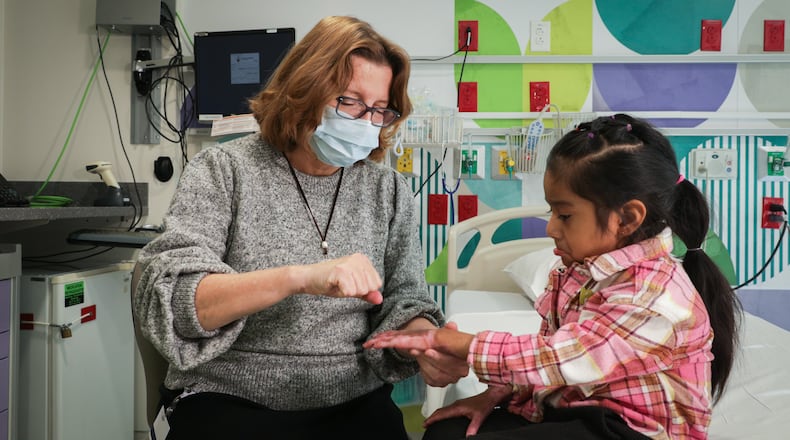“Scalds are usually preventable injuries,” said Dr. Petra Warner, chief of staff at Shriners Children’s Ohio.
Children under five are twice as likely to be seen for burn injuries at a hospital emergency department, Shiners said.
“Most scalds occur in the kitchen,” Warner said, using the example of kids running into the parent moving the pot of hot water for coffee, tea, or pasta. Children can also cause accidents by pulling on the handles of pans, or pulling the cords on bottle warmers, or also by trying to be independent and taking hot food out of the microwave.
“A best practice is to keep young children out of the kitchen until they can understand the risks. Even then, don’t let them use a microwave, stove or oven unsupervised,” Warner said. Warner also recommended placing handles directed into the stove and not away from the stove, where they can be grabbed.
“Keep cords out of reach of curious hands. Avoid unattended mugs of hot coffee, tea or cocoa on the kitchen table,” Warner said.
Burns can also occur in the bathroom with hair styling products like curling irons and straighteners, especially when a child is unsupervised, Warner said.
“Cooking is the leading cause of home fires and home fire injuries in the United States each year,” said Brad French, public information officer with the Dayton Fire Department. “Here in the city of Dayton, we’ve responded to over 220 cooking fires in the past three years, including many that have resulted in burn injuries.”
Burns and scalds can also be more serious for children.
“From a size perspective, what is a small size burn in an adult can be a significant size burn in a child,” Warner said.
First aid for a burn can vary based on severity, French said. Some basic tips include:
- Remove rings or other tight items from the burned area. Do not attempt to remove clothing or anything else stuck in the skin.
- For major burns, cover the area with gauze or a clean cloth.
- For minor burns, cool the area with water or a wet cloth.
- Don’t break blisters.
- If needed, call 911 or seek medical attention for evaluation and treatment.
Shiners also recommended not to apply any ointments, butter, sprays or other treatments to the burned area as they can actually make it worse.
How long the recovery takes and what that recovery entails is also dependent on many factors. If the burn is severe enough and at risk of scarring, the scarring process may take up to a year. Physical therapy may also be needed.
“If the burn is second degree, it normally heals within 14 days,” Warner said. “Other burns that take longer to heal or are deeper may have increased risk of scarring or require surgery. Once healed, the next question is if there will be a scar or not, and the scarring process can take up to a year’s time to mature. If burns cross joints, therapy may be needed and depending on the extent of injury, therapy can range from weeks to a months.”
For more information on Shiners’ annual campaign, visit beburnaware.org for burn prevention tips and information. If your child receives a burn of any kind that requires urgent care, Shriners Children’s Ohio can help. Contact the specialty burn care hospital at (855) 206-2096 or visit ShrinersOhio.org.
Tips to be safe in the kitchen:
• Never leave the kitchen while cooking. If you have to leave the room, take your children with you and watch them at all times.
• Establish a “kid-free zone” three feet around the stove and all areas where food and drink are prepared.
• Cook with pots on back burners and turn handles in.
• Test heated foods and liquids before serving to children.
• Do not cook or carry hot items while holding a child.
• Keep hot items away from edges of counters or tables.
• Use placemats instead of tablecloths. A tablecloth can be hazardous if a young child pulls on it while hot food is on the table.
• Never allow children to handle microwaved containers until they have cooled off enough to be touched, and remind them to open food slowly.
• Remind children that foods and liquids heated in the microwave may be much hotter than their containers.
• Microwave popcorn bags should never be opened right away as steam released from the bag can cause a burn in seconds.
About the Author

